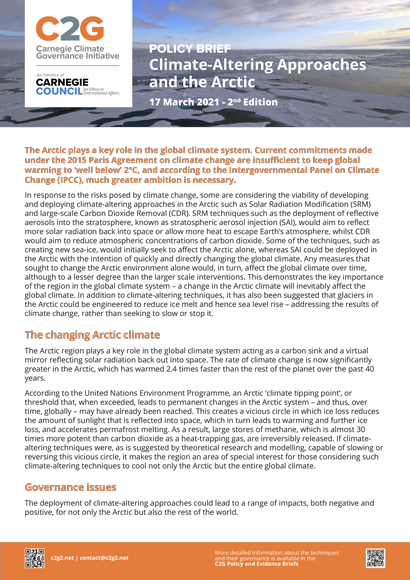Policy Brief: Climate-Altering Approaches and the Arctic
In response to the risks posed by climate change, some are considering the viability of developing and deploying climate-altering approaches in the Arctic such as Solar Radiation Modification (SRM) and large-scale Carbon Dioxide Removal (CDR). SRM techniques such as the deployment of reflective aerosols into the stratosphere, known as stratospheric aerosol injection (SAI), would aim to reflect more solar radiation back into space or allow more heat to escape Earth’s atmosphere, whilst CDR would aim to reduce atmospheric concentrations of carbon dioxide. Some of the techniques, such as creating new sea-ice, would initially seek to affect the Arctic alone, whereas SAI could be deployed in the Arctic with the intention of quickly and directly changing the global climate. Any measures that sought to change the Arctic environment alone would, in turn, affect the global climate over time, although to a lesser degree than the larger scale interventions. This demonstrates the key importance of the region in the global climate system – a change in the Arctic climate will inevitably affect the global climate. In addition to climate-altering techniques, it has also been suggested that glaciers in the Arctic could be engineered to reduce ice melt and hence sea level rise – addressing the results of climate change, rather than seeking to slow or stop it.
